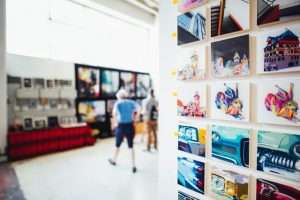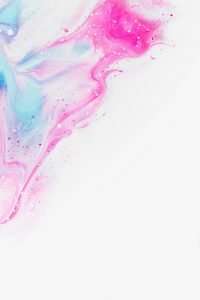*What is a portfolio and how to build a portfolio?*
A portfolio, in the art world, is a collection of your best artwork. It is not simply an album of your best photographs of your painting or sculptures. It should be more than just a collection. A good art portfolio demonstrates your skills in many different ways, including photography, painting and sculpture.
A basic art portfolio consists of:
1. A cover letter
2. An artist’s statement (1-2 pages)
3. A list of past exhibitions and publications
4. Your latest resume
5. Your CV/resumé (2-3 pages)
6. Examples of previous works that demonstrate your skills as an artist (artwork and photographs)
7. Press write ups about you or reviews from past exhibitions or performances (if any)
8. Photographs of your work (at least 8 images for each medium)
Artists need to be able to express themselves in different ways. In this article, we’re going to take a look at what art portfolios are and how they can help you get your work out there and seen by others.
The art portfolio is an essential tool for the modern artist. It is a collection of artistic work that allows you to show your abilities and style. The creation of this collection, which is often referred to as an “art folio,” will allow you to share your work with anyone who wants to see it, including potential clients and employers.
Art portfolios are essentially large collections of illustrations or photographs that demonstrate your skills in one or more specific areas. The best portfolios will include both traditional artwork along with other kinds of contemporary art like photography.
Creating an art portfolio can be a little tricky, because it is something that can vary widely depending on what you are trying to show off. If you are trying to show off your illustration skills, then the portfolio will probably have sketches or drawings in it. A photographer might use their photography as well as some other material like film negatives or scrap photos from magazines that they have used in their work.
Regardless of what you are trying to showcase though, there are some basic things that
One of the most important things that you need to think about when you are going to be applying for a job is what your portfolio looks like. You need to have at least one example of the type of work that you are going to be doing with your company. If you can, it is best to have a few different examples of the type of work that you do.
In order to build an art portfolio, there are a few things that you will need. First, you will need some time and space in which to build this portfolio. Then, you will need a camera or a digital camera so that you can create some images of your work. You will also need an inkjet printer and a scanner so that you can put your images onto paper and into your file for later viewing.
A portfolio is a collection of samples that showcases your artistic abilities. It can be used when applying for jobs, or as a way to market yourself. A portfolio is like a résumé for visual artists.
Trying to create art for a portfolio can be stressful, especially if this is the first time you have done this. But with some preparation, organization and planning, it can be fun and rewarding. You may even find that you enjoy it so much that you begin to create illustrations or art just for the joy of creating them.
A portfolio is a collection of original art that you’ve created and would like to show to prospective employers. It is a way for you to demonstrate your skills in an easy-to-read and professional format. A portfolio helps the viewer see how you think, what your strengths and weaknesses are, what interests you, and what kind of business style you have.
TIP: Always keep your portfolio updated: if recent work is not available, what will the viewer assume about your other work?
What does a portfolio consist of? – A portfolio should contain work that demonstrates your strengths in many areas of design. Your best work will do this; don’t be shy about showing it off! – To make it easier for the viewer to understand your strengths, try to organize pieces into themes. For instance, if you want to create an industrial site, put all of your mechanical designs together; or if you want to create an organic site, put all of your organic designs together. – Don’t show more than 10 or 20 pieces in a portfolio. Any more than that will be overwhelming, especially if there are many different kinds of pieces. – Be sure that everything in your portfolio is 100% original! Copying someone else’s design isn’t good design practice and doesn’t
To make the most of your portfolio, you should have realistic expectations of its purpose. A portfolio is meant to give an overall impression of your artistic abilities. It is not an advertising brochure for specific pieces. Artwork that is too small or too busy will be difficult to view or could even be unrepresentative of your best work, so think small first. It is not necessary to fill every page in the portfolio so give yourself a little room to grow.
Released into their care, students are often overwhelmed by the freedom they have: they can do whatever they want and follow their inspiration wherever it takes them. What’s more, they can do this whenever they want: there are no set schedules at art colleges. The result is often an outpouring of work that is initially exciting but then quickly becomes overwhelming for both student and teacher. In order to avoid this problem it is useful to have some kind of structure that will focus your energy and help you avoid getting lost in a welter of possibilities.
In most cases, students need to show a range of media and styles over time, so generally it’s best not to include many finished pieces in your first portfolio unless you have a good reason for doing so (for example if you’ve won an award). Instead,
Being a graphic designer is not easy. You need to learn the principles of design and apply them to your work. For this reason, you need to practice. However, how do you know if your portfolio is good enough?
There are many components that go into making up a portfolio. However, there are some basics that will help any designer create an amazing portfolio that will get them noticed by potential employers.
The first thing to consider is what kind of portfolio you should use: print or digital. This is dependent on the type of work you are looking to do. If you want to work in a print shop, then a print portfolio would be best for those jobs. Digital portfolios are great for UI/UX or web designers because these types of jobs require the use of digital media, such as websites and apps.
A good portfolio will have proof of your ability and examples of excellent work. Your best bet for this is using color and using it correctly. Make sure all the color you use really works together. Don’t use too many hues, but also don’t use only one color for your whole project!
Finally, as you build your portfolio, keep in mind that no one is perfect, including yourself! Know what your strengths and


